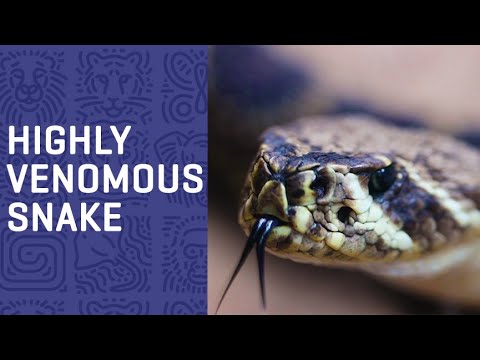MEET OUR EASTERN DIAMONDBACK RATTLESNAKE: An Introduction
Rattlesnakes are incredible creatures that can invoke both fear and admiration in people. These animals are a crucial part of the ecosystem, essential in controlling rodent populations. However, they are often misunderstood and mistreated, leading to their decline in many areas. In this article, we will meet the Eastern Diamondback Rattlesnake, one of North America’s largest and most impressive species. We will learn about their behaviors, habitat, and importance in the ecosystem.
Appearance and Behaviors
The Eastern Diamondback Rattlesnake is a large and imposing snake, measuring up to 8 feet in length and weighing up to 30 pounds. They are distinguished by their diamond-shaped pattern on their back and their characteristic rattle at the end of their tail. This rattle is used to warn predators and humans of their presence.
Rattlesnakes are ambush predators, waiting for their prey to pass by before striking with their venomous fangs. Contrary to popular belief, rattlesnakes do not attack unprovoked and will usually only bite if threatened or cornered. Rattlesnakes are relatively docile animals that would rather avoid confrontation.
Habitat and Range
The Eastern Diamondback Rattlesnake is found in the southeastern United States, from North Carolina to Florida and as far west as Louisiana. They inhabit various habitats, from pine forests to marshes to agricultural fields. These snakes are essential ecosystem members, helping keep rodent populations in check.
Sadly, the habitat of the Eastern Diamondback Rattlesnake is under threat, with development and habitat destruction leading to their decline. We must protect their habitats and educate people on the importance of these animals to ensure their survival.
Conservation Efforts
The Dallas Zoo is a leader in conservation efforts for rattlesnakes and other wildlife. They work with other zoos and organizations to develop breeding programs, education initiatives, and habitat restoration. The Dallas Zoo’s Herpetarium is home to various rattlesnakes, including the Eastern Diamondback Rattlesnake, and is an essential educational resource for the public.
In Conclusion
The Eastern Diamondback Rattlesnake is an impressive and vital member of the ecosystem. While they can be intimidating, we must respect and protect these animals. By educating the public, supporting conservation efforts, and protecting their habitats, we can ensure the survival of this incredible animal and many others like it.
*****
Summary of Transcript:
The video concerns the Eastern diamondback rattlesnake, North America’s giant venomous snake. The snake is declining in numbers due to habitat loss and urbanization. They are skilled exterminators and can go without food for months during natural burn cycles. The venom is a hemotoxin that attacks red blood cells, but bites are rarely fatal with anti-venom and medical attention. The rattling noise comes from the rattles made of hollow keratin, and it is their go-to stay-away response when they feel threatened. The video also promotes visiting the Eastern diamondback rattlesnake at the Dallas Zoo.
*****
Summary of Description:
The Dallas Zoo introduces its Eastern Diamondback Rattlesnake through a video featuring Zoologist Bradley N. The video showcases exciting facts and qualities about the rattlesnake and encourages viewers to subscribe to and follow their YouTube channel on social media. The Dallas Zoo aims to engage people and save wildlife.
*****
*****
Source Description
MEET OUR EASTERN DIAMONDBACK RATTLESNAKE: There’s a lot to love about rattlesnakes! Watch and learn all about this incredible animal from Zoologist Bradley N. 🐍
➡ Subscribe: http://bit.ly/SubscribeDallasZooTube
Follow the Dallas Zoo:
Official Site: http://bit.ly/DallasZooOfficialSite
Facebook: http://bit.ly/DallasZooFacebook
Instagram: http://bit.ly/DallasZooInstagram
Twitter: https://twitter.com/dallaszoo
TikTok: https://www.tiktok.com/@dallaszooofficial
Engaging People & Saving Wildlife

